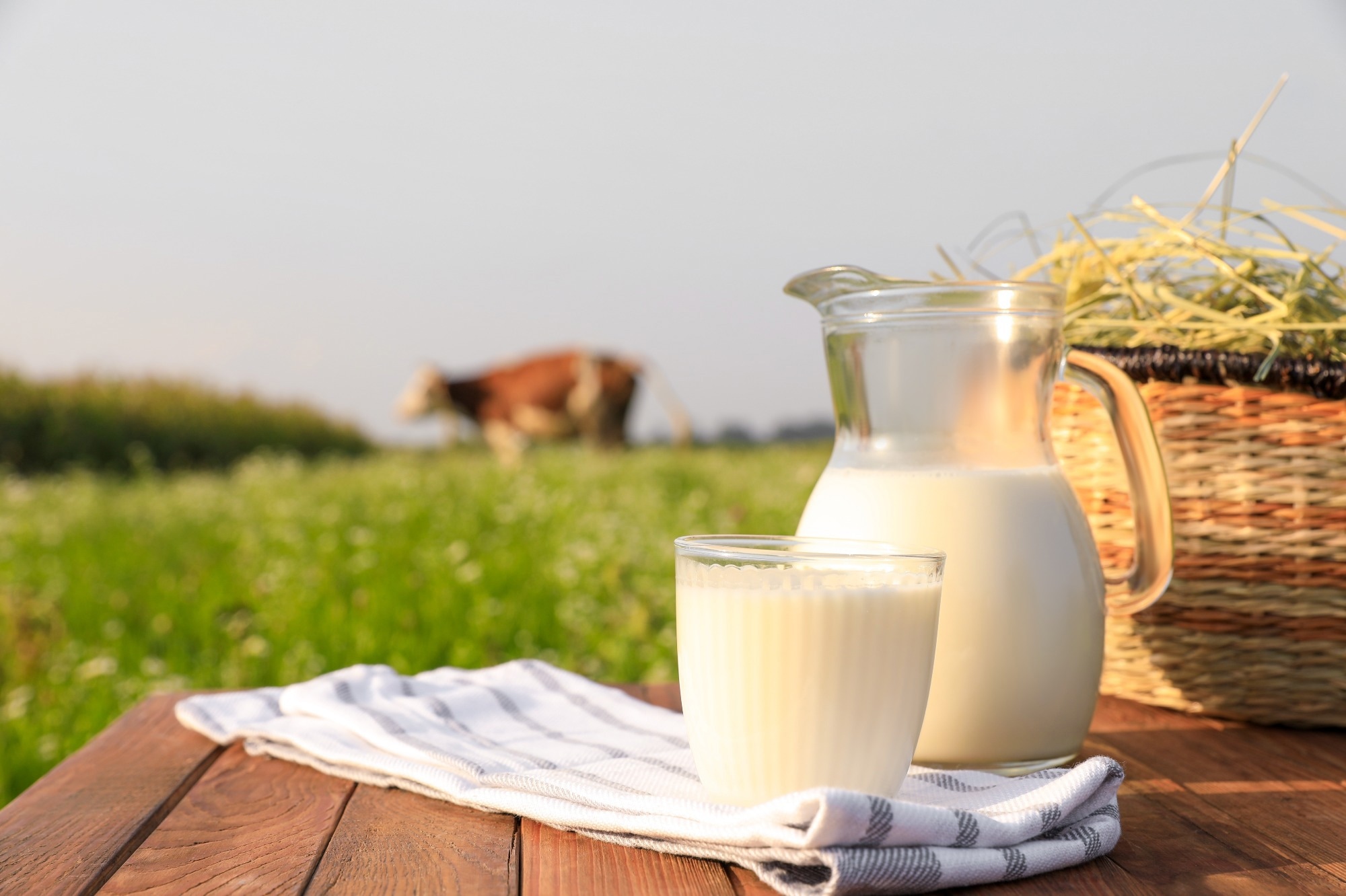These variations were significant between sampling locations and even samples taken from the same regions. Thus, caution is recommended when referring to or proposing the U.S. national average in policy or interventions, as iodine consumption might be over- or underestimated in a given location.
 Study: Large Iodine Variability in Retail Cows’ Milk in the U.S.: A Follow-Up Study among Different Retail Outlets. Image Credit: New Africa / Shutterstock.com
Study: Large Iodine Variability in Retail Cows’ Milk in the U.S.: A Follow-Up Study among Different Retail Outlets. Image Credit: New Africa / Shutterstock.com
Iodine in milk
Insufficient iodine in the diet remains one of the most prevalent nutrient deficiencies in the world. Iodine deficiency is estimated to affect 35-45% of humans, with women of reproductive age at the highest risk.
Iodine is associated with fetal neurological and brain development, which is why the U.S. daily recommended intake (DRI) of iodine for lactating women is 290 µg as compared to 150 µg for other adults.
In the U.S., cow’s milk follows iodized salt as a vital iodine source, making its assessment essential for understanding and mitigating iodine deficiency. Previous United States Department of Agriculture (USDA) national food composition database studies have estimated the national average iodine concentration in cow’s milk at 85 µg/240 mL serving. However, these studies discovered an inter-sample range of 31–251 µg/240 mL, which is 12%-167% of the daily recommended index (DRI), thus indicating concerning variability.
While the USDA study captured iodine variability as a one-time sampling study, it was unable to elucidate the sources or trends of sample variability. The present study aims to investigate the nature of variability by sampling bi-monthly over a year. This study further evaluates the local variation experienced by a single individual buying milk from a single location over time, as compared to national variations that have been previously described.
About the study
Twelve locations throughout the U.S. were selected as representatives for food supply and population density. Samples comprised 1.89 L of milk collected from a popular retail outlet bi-monthly from May 2021 to March 2022.
Monthly samples were collected from two additional locations of Blacksburg and Shawnee to evaluate within-location variability between December 2020 and November 2021.
All samples were characterized and analyzed in the Food Analysis Laboratory Control Center in Blacksburg, Virginia. To estimate iodine concentration, samples were paired with a 2% milk control material and analyzed using inductively coupled plasma mass spectrometry (ICP-MS). Data analyses involved using a one-way ANOVA model were used to estimate within-location variance.
Study findings
The study-wide mean iodine content was 82.5 µg/240 mL, which was comparable to the 85 µg/240 mL reported in the previous study. Within-location variability differed significantly from place to place, with four outlets having iodine concentration variations exceeding than 50 µg/serving. The highest iodine concentration recorded was 281 µg/240 mL.
Previous research has established that iodine used for sanitation and bovine diet supplementation is predominantly responsible for variations in iodine concentration in milk. Despite stringent guidelines issued by the National Research Council of the National Academies and the federal Pasteurized Milk Ordinance (PMO), local differences in compliance with these directives might result in very different iodine concentrations at the consumer.
An important takeaway from this study is the compounding effect of exceeding the recommended serving size of 240 mL. Children and adolescents are known to regularly consume two or even three 240 mL mugs of milk throughout a single day.
Whereas a one-cup (240 mL) serving of milk would provide 67% of the iodine DRI for adults based on the national mean, the contribution from a one-cup serving at the observed minimum (31.4 µg) or maximum (251 µg) would provide 21% or 167% of the DRI, respectively. For an intake of 3 cups (720 mL) per day, which might be typical of many children and adolescents, this range becomes more dramatic.”
Conclusions
In the present study, researchers collected milk samples from 14 retail outlets across the U.S. between December 2020 and March 2022. These samples were tested for their iodine content to highlight any between- and within-location variability that might exist.
The study findings indicate that the mean iodine concentration of all 96 samples was 82.5 µg/240 mL, which was comparable to the previously estimated and recommended mean of 85 µg/240 mL.
Between-site variability was alarming, with some cites reporting concentrations averaging 35.3 µg/240 mL whereas others had iodine concentrations of 113 µg/240 mL. Differences in iodine concentrations may be attributed to location-specific practices that increase or limit iodine supplements in cow diets or use the chemical in stable sanitation.
Guidelines within a group of regional dairy farms or particular processors could in turn affect the contribution of iodine in a particular milk supply.”
Within-site variability was similarly high, with some milk processors having over 129 µg/240 mL differences between batches.
The data from this study can provide important insights for policymakers and clinicians addressing people with iodine deficiencies or exceeding safe intake limits.